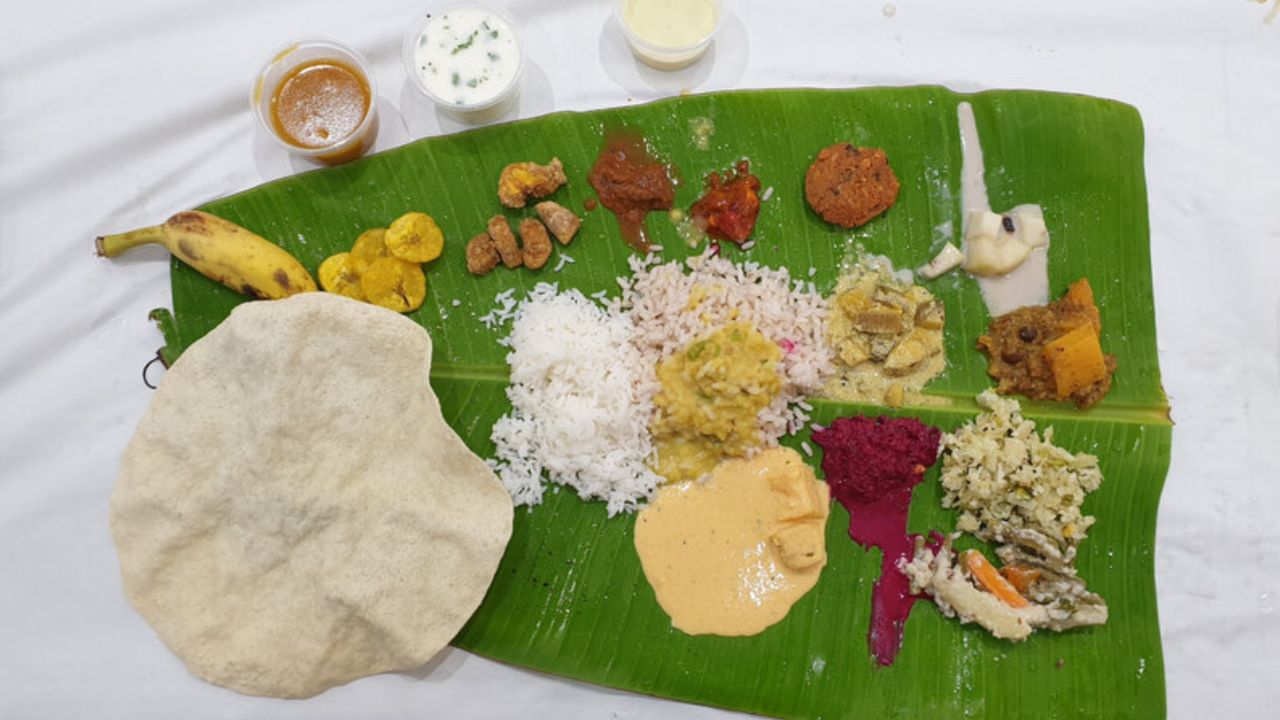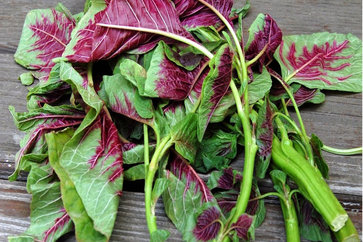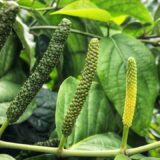The Six Tastes of Ayurveda: The Power of Taste for Wellness
Ayurveda is an ancient system of medicine that originated in India over 5,000 years ago. The word “Ayurveda” comes from the Sanskrit words “Ayur” meaning “life” and “Veda” meaning “knowledge,” together translating to “the knowledge of life.” Ayurveda focuses on achieving balance in the body, mind, and spirit for overall well-being. 
It emphasizes the use of natural remedies, including herbs, diet, lifestyle changes, and spiritual practices, to prevent disease and maintain health. Ayurvedic principles are based on the idea that the universe and our bodies are made up of five elements: earth, water, fire, air, and ether.
These elements combine to form three doshas—Vata, Pitta, and Kapha—that govern our physical and mental functions.
Importance of Taste (Rasa) in Ayurveda
In Ayurveda, taste, or Rasa, plays a central role in maintaining health and balance. There are six primary tastes recognized in Ayurveda: sweet, sour, salty, bitter, pungent, and astringent. Each of these tastes is believed to have distinct qualities that influence the body’s doshas (Vata, Pitta, and Kapha) and contribute to health in specific ways.
- Sweet: Balances Vata and Pitta, nourishes and provides energy.
- Sour: Stimulates digestion and balances Vata, but increases Pitta.
- Salty: Balances Vata, but increases Pitta and Kapha when excessive.
- Bitter: Reduces excess Pitta, cleanses the body, and improves digestion.
- Pungent: Stimulates appetite and digestion, but increases Pitta.
- Astringent: Reduces excess Pitta and Kapha, and helps in detoxification.
Each taste affects the body differently, helping to bring the doshas into balance or out of balance, depending on the individual’s constitution and the environment. Ayurveda recommends consuming a balanced variety of tastes to ensure that all doshas are harmonized.
Connection Between Taste, Digestion, and Overall Well-Being
In Ayurveda, digestion is considered the foundation of health. The concept of Agni (digestive fire) is central to Ayurvedic practices, as it is believed that strong Agni leads to good digestion, nutrient absorption, and overall vitality. The tastes we consume influence Agni, making them an essential tool for improving or maintaining digestion. For example:
- Sweet foods are considered nourishing and grounding, beneficial for those with weak digestion (low Agni).
- Pungent or bitter tastes can stimulate Agni, helping to enhance digestive strength.
A balanced intake of all six tastes helps to maintain Agni at optimal levels, ensuring proper digestion, absorption of nutrients, and elimination of waste. When digestion is strong, the body remains healthy, and the mind stays clear and focused. On the other hand, an imbalance in tastes can lead to digestive issues, imbalanced doshas, and disease.
The Six Tastes (Rasas) in Ayurveda
In Ayurveda, the six primary tastes (Rasas) play a crucial role in balancing the body and mind. Each taste has unique qualities that influence the doshas (Vata, Pitta, and Kapha) and digestive health. Here’s a breakdown of each taste, its qualities, examples, and effects on the body:
1. Sweet (Madhura)
Qualities: Heavy, moist, cooling.
Examples: Fruits, grains, dairy, sweeteners like honey, jaggery, and sugar.
Effects on the Body:
- Nourishing and grounding: Sweet foods provide sustenance, helping to build tissue and enhance overall vitality.
- Increases Kapha: Due to its heavy and moist qualities, it can increase Kapha, which may lead to feelings of sluggishness or heaviness if consumed excessively.
- Decreases Vata and Pitta: Sweet tastes calm Vata (dryness and lightness) and Pitta (heat), bringing balance to individuals with these dosha imbalances.
- Promotes energy and endurance: Sweet foods support long-term energy and stamina by stabilizing blood sugar and providing lasting fuel.
2. Sour (Amla)
Qualities: Heating, light, oily.
Examples: Citrus fruits (lemons, oranges), fermented foods (pickles, yogurt), and vinegar.
Effects on the Body:
- Stimulates digestion: Sour foods promote the production of digestive juices and enhance appetite.
- Increases Pitta and Kapha: The heating nature of sour taste increases Pitta, leading to potential excess heat and acidity, and Kapha, promoting moisture and heaviness.
- Decreases Vata: Sour foods counteract the dry and light qualities of Vata, promoting lubrication and stability.
- Improves flavor and palatability: Sour foods enhance the flavor profile of meals, making them more appetizing and stimulating.
3. Salty (Lavana)
Qualities: Heating, heavy, moist.
Examples: Sea salt, rock salt, salty snacks, and certain vegetables like celery.
Effects on the Body:
- Enhances flavor and retains water: Salty foods intensify the taste of dishes and help with water retention, hydrating the body.
- Increases Pitta and Kapha: The heating and moist qualities increase the qualities of Pitta (heat and intensity) and Kapha (heaviness and stagnation).
- Decreases Vata: Salty foods help balance Vata by countering dryness and lightness.
- Supports electrolyte balance: Salt plays a key role in maintaining electrolyte levels, promoting proper fluid balance in the body.
4. Bitter (Tikta)
Qualities: Cooling, light, dry.
Examples: Leafy greens (kale, spinach), turmeric, bitter melon, and certain herbs.
Effects on the Body:
- Detoxifying: Bitter foods help in cleansing the body by promoting digestion and stimulating detoxification processes.
- Reduces Pitta and Kapha: The cooling and drying properties of bitter foods reduce Pitta (heat and inflammation) and Kapha (excess moisture and heaviness).
- Increases Vata: Since bitter foods are light and dry, they can increase Vata, especially if consumed in excess or by individuals who already have a dominant Vata dosha.
- Supports liver health: Bitter foods are known to support liver function and promote bile production, aiding in detoxification.
5. Pungent (Katu)
Qualities: Heating, light, dry.
Examples: Chili peppers, garlic, ginger, onions, mustard, black pepper.
Effects on the Body:
- Stimulates metabolism: Pungent foods ignite the digestive fire (Agni), boosting metabolism and helping with digestion.
- Increases Pitta and Vata: The heating and stimulating qualities of pungent foods can increase Pitta (leading to potential irritability or inflammation) and Vata (causing dryness and lightness).
- Decreases Kapha: Pungent foods help to balance Kapha by reducing excess heaviness, moisture, and stagnation.
- Clears congestion: Pungent foods, especially spicy ones, help open up the sinuses and clear respiratory passages, making them ideal for dealing with congestion or cold.
Astringent (Kashaya)
Qualities: Cooling, dry, heavy.
Examples: Legumes (lentils, chickpeas), green tea, unripe bananas, apples, and certain vegetables like cauliflower.
Effects on the Body:
- Tones tissues: Astringent foods have a tightening effect on tissues and help tone muscles, skin, and organs.
- Reduces Pitta and Kapha: The cooling and drying nature of astringent foods helps to reduce excess heat (Pitta) and moisture (Kapha).
- Increases Vata: Since astringent foods are dry and heavy, they can increase the Vata dosha, which can lead to dryness, constipation, or other Vata imbalances when consumed excessively.
- Helps in wound healing: Astringent foods have a natural ability to support tissue repair and promote healing, making them beneficial for cuts and internal inflammation.
The Role of the Six Tastes in Balancing Doshas
In Ayurveda, maintaining a balance between the three doshas—Vata, Pitta, and Kapha—is essential for optimal health. The doshas are energetic forces that govern the physical and mental processes of the body.
Each person has a unique combination of the three doshas, and their balance determines an individual’s physical constitution, mental state, and overall health.
The six tastes (Rasas) in Ayurveda play a vital role in influencing these doshas, and understanding how they interact helps promote health and prevent imbalances.
The Three Doshas:
1. Vata:
- Qualities: Dry, light, cool, mobile, and irregular.
- Function: Vata governs movement in the body, including circulation, breathing, and communication. It also influences the nervous system and mental processes, such as creativity and adaptability.
- Imbalance: When Vata is out of balance, it can lead to symptoms like dryness, constipation, anxiety, insomnia, and erratic behavior.
2. Pitta:
- Qualities: Hot, sharp, oily, and intense.
- Function: Pitta governs digestion, metabolism, and transformation in the body. It is responsible for the breakdown of food, the assimilation of nutrients, and the production of heat.
- Imbalance: When Pitta is out of balance, it can lead to conditions like acidity, inflammation, skin rashes, irritability, and digestive problems.
3. Kapha:
- Qualities: Heavy, moist, cool, stable, and smooth.
- Function: Kapha governs structure, stability, and lubrication in the body. It is responsible for tissue growth, fluid balance, immunity, and strength.
- Imbalance: When Kapha is out of balance, it can lead to symptoms such as weight gain, sluggishness, congestion, and depression.
How Each Taste Influences the Doshas:
1. Sweet (Madhura)
Effect on Doshas:
- Balances Vata and Pitta: Sweet foods are grounding and nourishing, which calms the dry, light qualities of Vata and the intense heat of Pitta.
- Increases Kapha: Because sweet foods are moist and heavy, they can exacerbate Kapha, leading to excess weight or sluggishness if consumed in excess.
2. Sour (Amla)
Effect on Doshas:
- Increases Pitta and Kapha: Sour foods stimulate digestion and enhance appetite but can aggravate Pitta, causing heat, acidity, or irritability, and can increase Kapha when consumed in excess, causing heaviness and congestion.
- Decreases Vata: Sour taste provides lubrication and stability, helping to balance the dryness and lightness of Vata.
3. Salty (Lavana)
Effect on Doshas:
- Increases Pitta and Kapha: Salty foods stimulate heat and moisture, which can exacerbate Pitta and Kapha imbalances.
- Decreases Vata: Salty taste helps to counteract the dryness and lightness of Vata by providing moisture and grounding.
4. Bitter (Tikta)
Effect on Doshas:
- Reduces Pitta and Kapha: Bitter foods are cooling and drying, which help to calm the heat and inflammation associated with Pitta and the excess moisture and heaviness of Kapha.
- Increases Vata: Bitter foods, being light and dry, can increase Vata, especially if consumed in excess or if the individual already has a dominant Vata dosha.
5. Pungent (Katu)
Effect on Doshas:
- Increases Pitta and Vata: Pungent foods are heating and stimulating, which can increase the intensity of Pitta and cause dryness and irritability in Vata.
- Decreases Kapha: Pungent foods help reduce the heaviness and stagnation associated with Kapha, promoting circulation and metabolism.
6. Astringent (Kashaya)
Effect on Doshas:
- Reduces Pitta and Kapha: Astringent foods are cooling and drying, which help reduce the excess heat and moisture in the body, balancing Pitta and Kapha.
- Increases Vata: The drying and heavy nature of astringent foods can increase the Vata dosha, leading to conditions like dryness and constipation when overconsumed.
Importance of Including All Six Tastes in a Meal
In Ayurveda, it is recommended to include all six tastes in every meal to ensure that all doshas are balanced and to support the digestive process.
Each taste has a specific role in regulating the body’s internal environment, and when consumed in the right proportions, they work together to maintain harmony.
- Holistic Nutrition: Including all six tastes in a balanced manner provides a broad spectrum of nutrients and energies that support various bodily functions, from digestion to metabolism to mental clarity.
- Promotes Digestion: A variety of tastes stimulates Agni (digestive fire), ensuring that the body efficiently processes food, absorbs nutrients, and eliminates waste.
- Personalized Balance: While the general rule is to include all six tastes, Ayurveda also advises modifying the tastes based on an individual’s dosha imbalances, lifestyle, and seasonal changes. For example, someone with a dominant Pitta may want to avoid excess sour or salty foods, while someone with a dominant Vata may benefit from more sweet and sour tastes.
- Prevents Overindulgence: When only one or two tastes are consumed excessively, it can lead to the aggravation of specific doshas, causing imbalances that can manifest as physical or mental health issues.
Practical Applications of the Six Tastes
Incorporating the six tastes (Rasas) into daily meals is a practical and effective way to balance the doshas and maintain overall health.
Ayurveda encourages the mindful consumption of a variety of tastes to support the body’s unique needs and to promote harmony with nature’s rhythms.
Below are some practical tips for including the six tastes in your diet, adjusting your meals according to your dosha, and considering seasonal factors.
1. How to Incorporate the Six Tastes into Daily Meals
To maintain doshic balance and enhance digestion, try to incorporate all six tastes in every meal, aiming for a variety of flavors. Here are some simple suggestions for how to do so:
- Breakfast: A wholesome porridge made with grains (sweet), fruits like berries or apples (sweet and sour), and a dash of cinnamon (pungent) can balance Vata. Pair it with some yogurt (sour) for added probiotics and a sprinkle of seeds (salty).
- Lunch: A vegetable stir-fry with a variety of seasonal veggies (bitter), a source of protein like legumes (astringent), and a pinch of salt (salty) can ensure a balance of flavors. You can add some spices like ginger or chili (pungent) for warmth and metabolism-boosting benefits.
- Dinner: A hearty soup or stew with grains and root vegetables (sweet), a squeeze of lemon (sour), and some greens (bitter) can be grounding and nourishing. For added flavor, consider using spices like turmeric or cumin (pungent) and a touch of salt (salty).
By incorporating a range of tastes throughout the day, your digestive fire (Agni) remains stimulated and the body receives all the nourishment it needs.
2. Adjusting the Diet According to One’s Dominant Dosha and Current Imbalances
Each individual has a unique dosha constitution, and the balance of these doshas can shift due to factors like stress, diet, climate, or lifestyle. Here’s how to adjust your diet based on your dominant dosha and any current imbalances:
1. Vata Dominant:
- Vata imbalance: When Vata is aggravated (e.g., due to cold, dryness, or stress), aim for more sweet, sour, and salty tastes to provide grounding, warmth, and moisture. Choose warm, nourishing foods like soups, stews, and grains to balance Vata.
- Vata balance: Vata types generally thrive on sweet, sour, salty, and mildly bitter tastes. Include comforting foods like root vegetables, dairy, and healthy fats to calm their dry and light nature.
2. Pitta Dominant:
- Pitta imbalance: When Pitta is high (e.g., due to heat, inflammation, or irritability), focus on bitter, sweet, and astringent tastes to cool down the excess heat and reduce acidity. Favor cooling foods like cucumbers, leafy greens, coconut, and dairy, while avoiding overly spicy or sour foods.
- Pitta balance: Pitta types thrive with sweet, bitter, and astringent tastes. Incorporate foods like sweet fruits, vegetables, and grains, while minimizing sour and salty flavors that may aggravate their fiery nature.
3. Kapha Dominant:
- Kapha imbalance: When Kapha is out of balance (e.g., due to excess moisture, congestion, or sluggishness), opt for pungent, bitter, and astringent tastes to stimulate digestion, reduce excess moisture, and invigorate the body. Use warming spices like ginger, turmeric, and garlic, and favor light, dry, and stimulating foods like leafy greens and legumes.
- Kapha balance: Kapha types generally benefit from pungent, bitter, and astringent tastes. Light meals with strong spices and low-fat options help keep the body energized and balanced.
3. Seasonal Considerations for Balancing the Doshas Through Taste
Ayurveda teaches that the seasons influence the doshas and the body’s needs. Adapting your diet to the changing seasons is an important practice for maintaining harmony and preventing imbalances.
1. Winter (Cold, Dry, and Windy):
- Vata tends to increase in winter, as the cold and dry weather aggravates Vata’s qualities of dryness and lightness.
- Recommended tastes: Focus on sweet, sour, and salty tastes to provide warmth, moisture, and grounding. Include nourishing soups, stews, root vegetables, grains, and warming spices like cinnamon and cloves.
- Avoid: Bitter and astringent foods that may exacerbate Vata dryness, such as leafy greens or raw vegetables.
2. Spring (Wet and Damp):
- Kapha increases in spring due to the moist, heavy, and cool qualities of the season.
- Recommended tastes: Emphasize pungent, bitter, and astringent tastes to help break down excess Kapha and clear congestion. Include light foods like leafy greens, salads, sprouts, and detoxifying herbs like ginger, turmeric, and mustard.
- Avoid: Sweet and salty foods that can increase Kapha, such as dairy and processed foods.
3. Summer (Hot and Intense):
- Pitta tends to increase during the hot summer months due to the intense heat and sharp qualities of the season.
- Recommended tastes: Focus on sweet, bitter, and astringent tastes to cool and calm Pitta. Opt for cooling foods like cucumbers, melons, coconut, leafy greens, and dairy. Incorporate herbs like mint, fennel, and cilantro.
- Avoid: Pungent and sour foods that can increase the heat of Pitta, such as spicy foods and citrus fruits.
4. Fall (Dry and Cooling):
- Vata tends to increase again in the fall, with the dryness and coolness in the air aggravating Vata qualities.
- Recommended tastes: Sweet, sour, and salty tastes help to balance Vata in the fall. Include nourishing soups, stews, grains, and foods that are moist and warming, like cooked root vegetables and oily foods.
- Avoid: Bitter and astringent foods that may exacerbate the dry qualities of Vata, such as raw salads or too many bitter greens.
Ayurveda emphasizes the significance of taste (Rasa) not only for enjoyment but as a key factor in promoting digestive health and overall well-being. By understanding how each taste affects the doshas and Agni, individuals can choose foods and herbs that support their unique constitutions and promote balance in their lives.

























